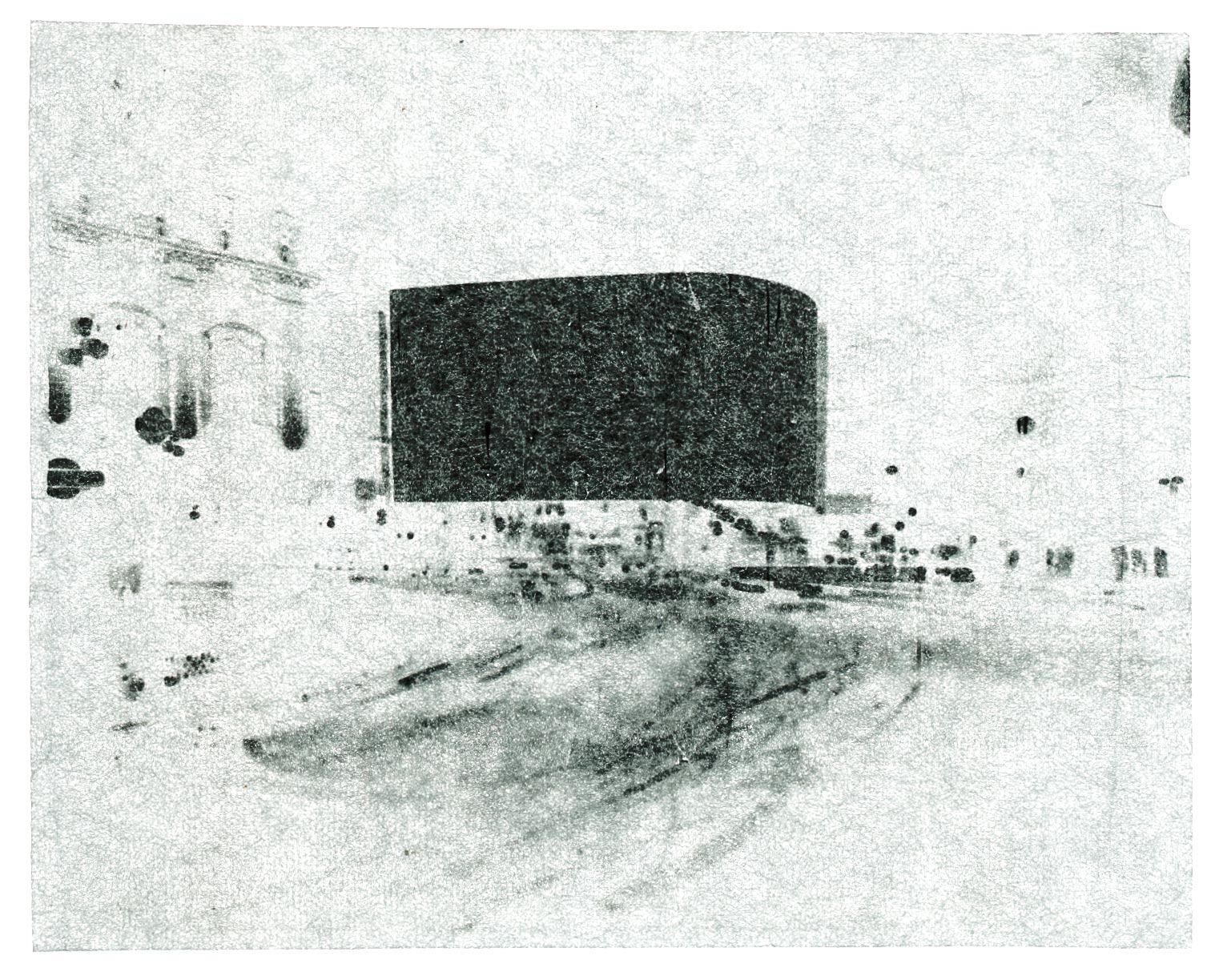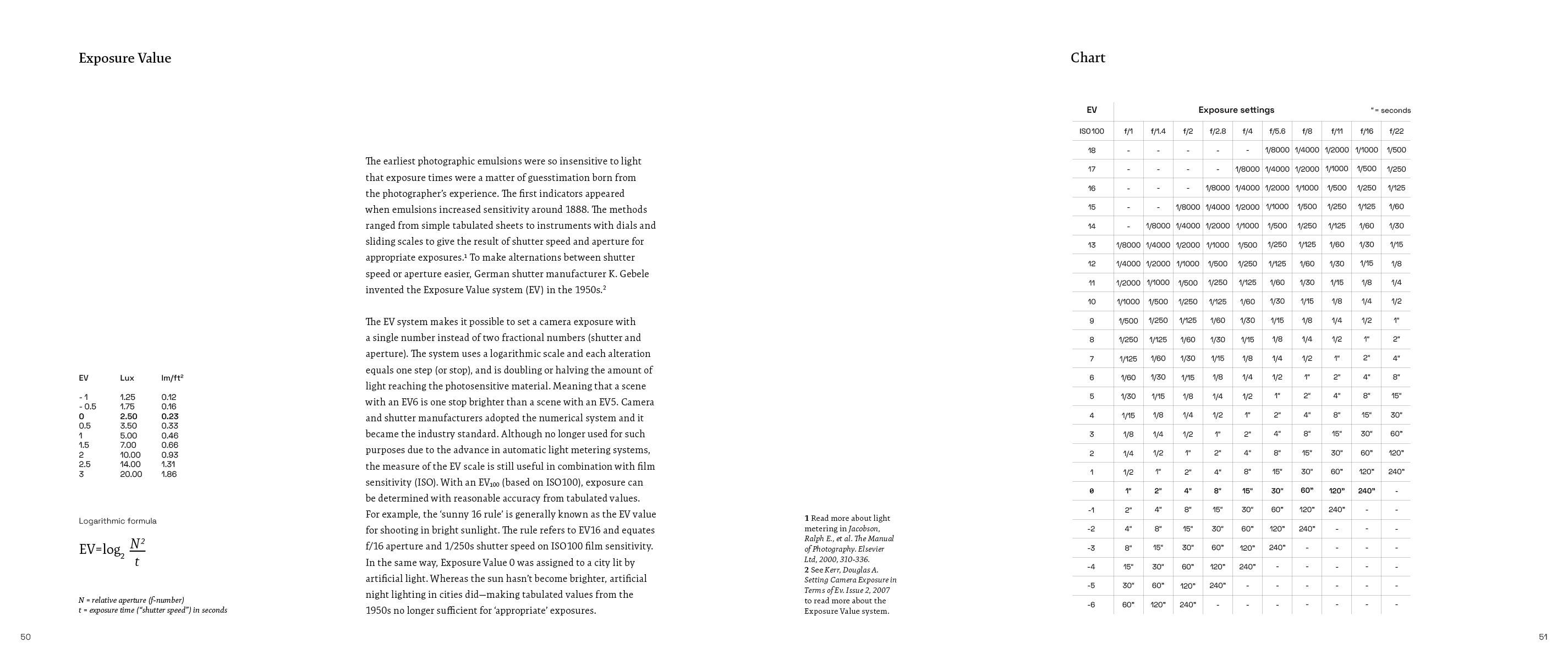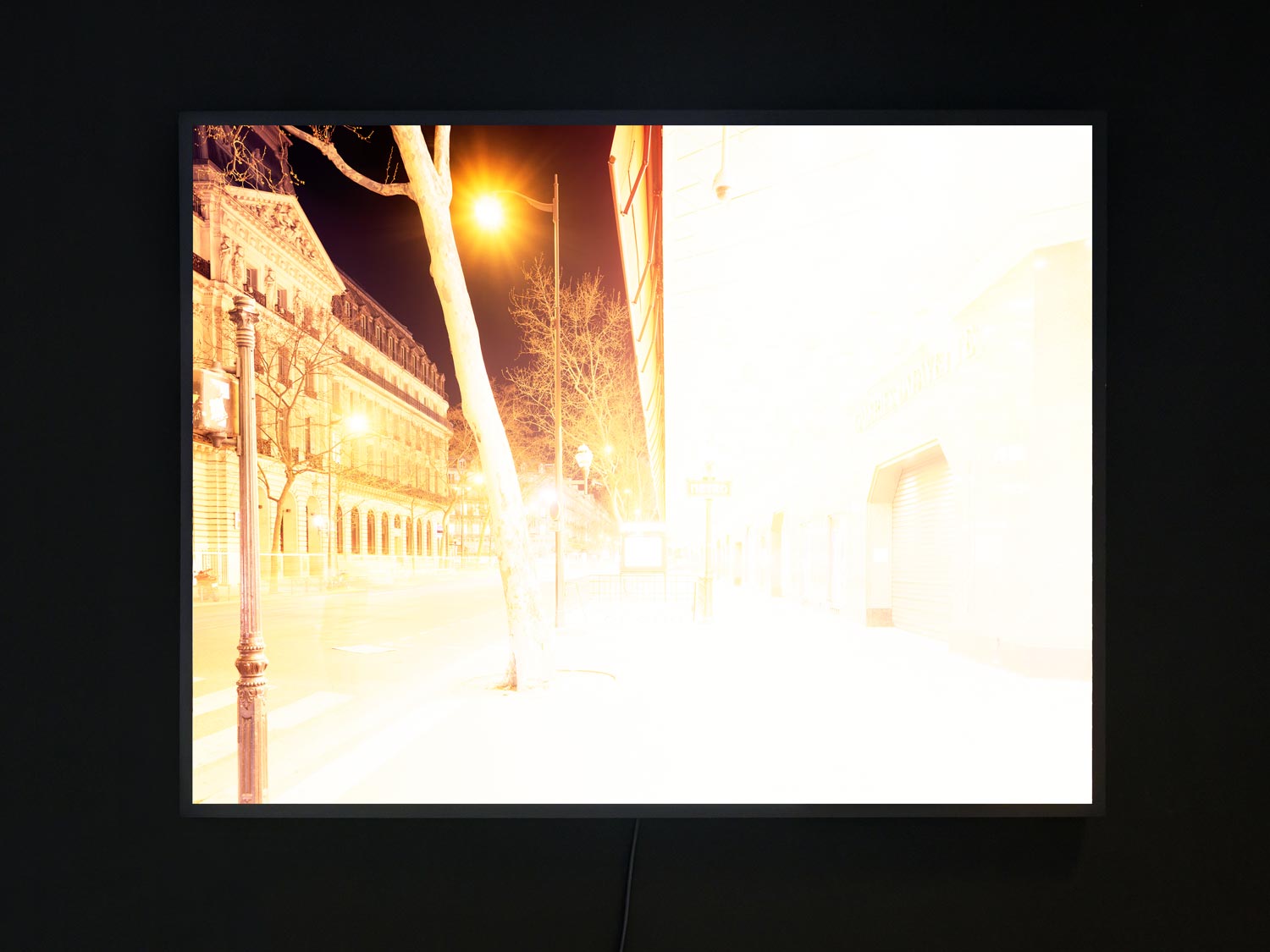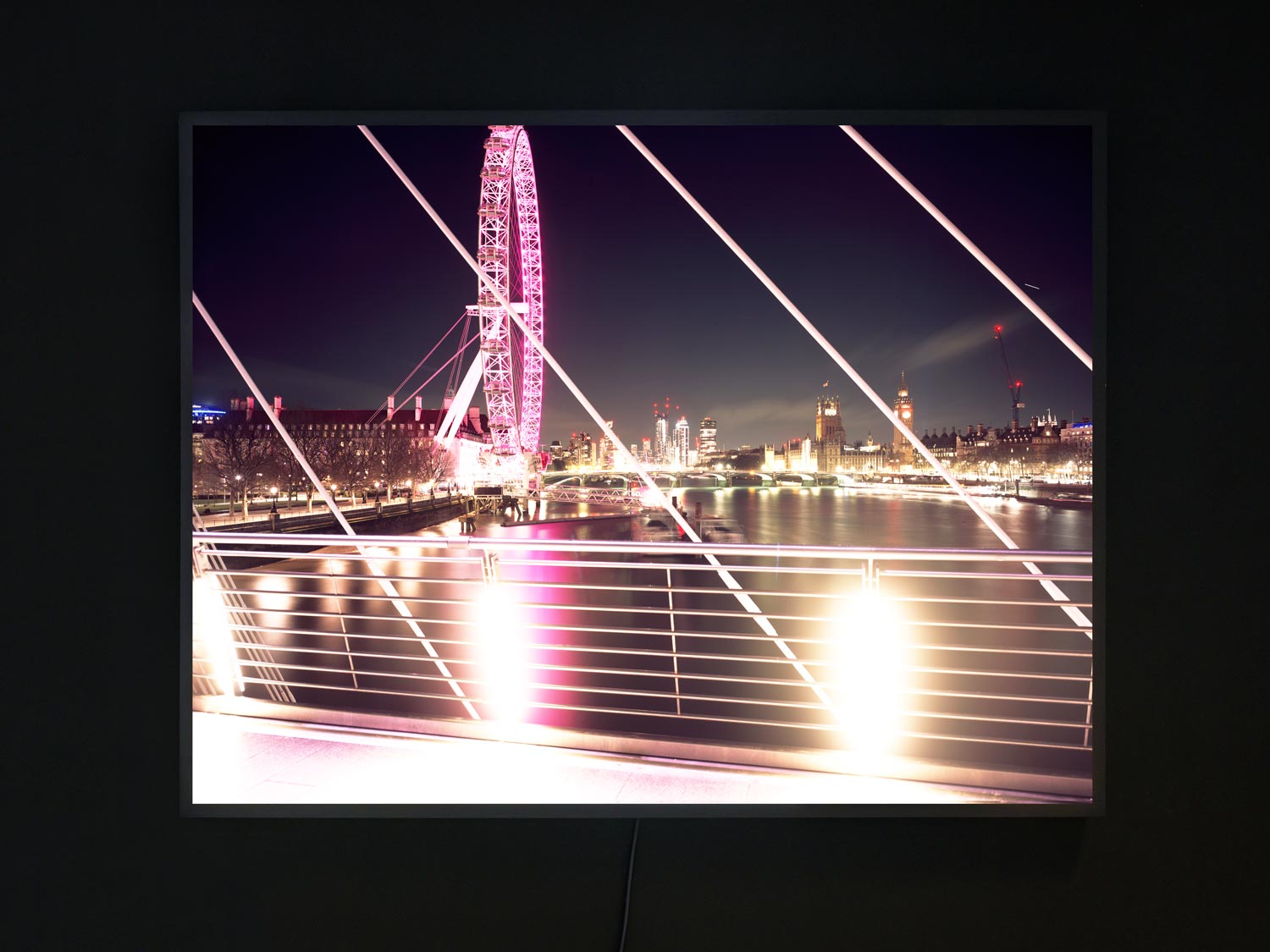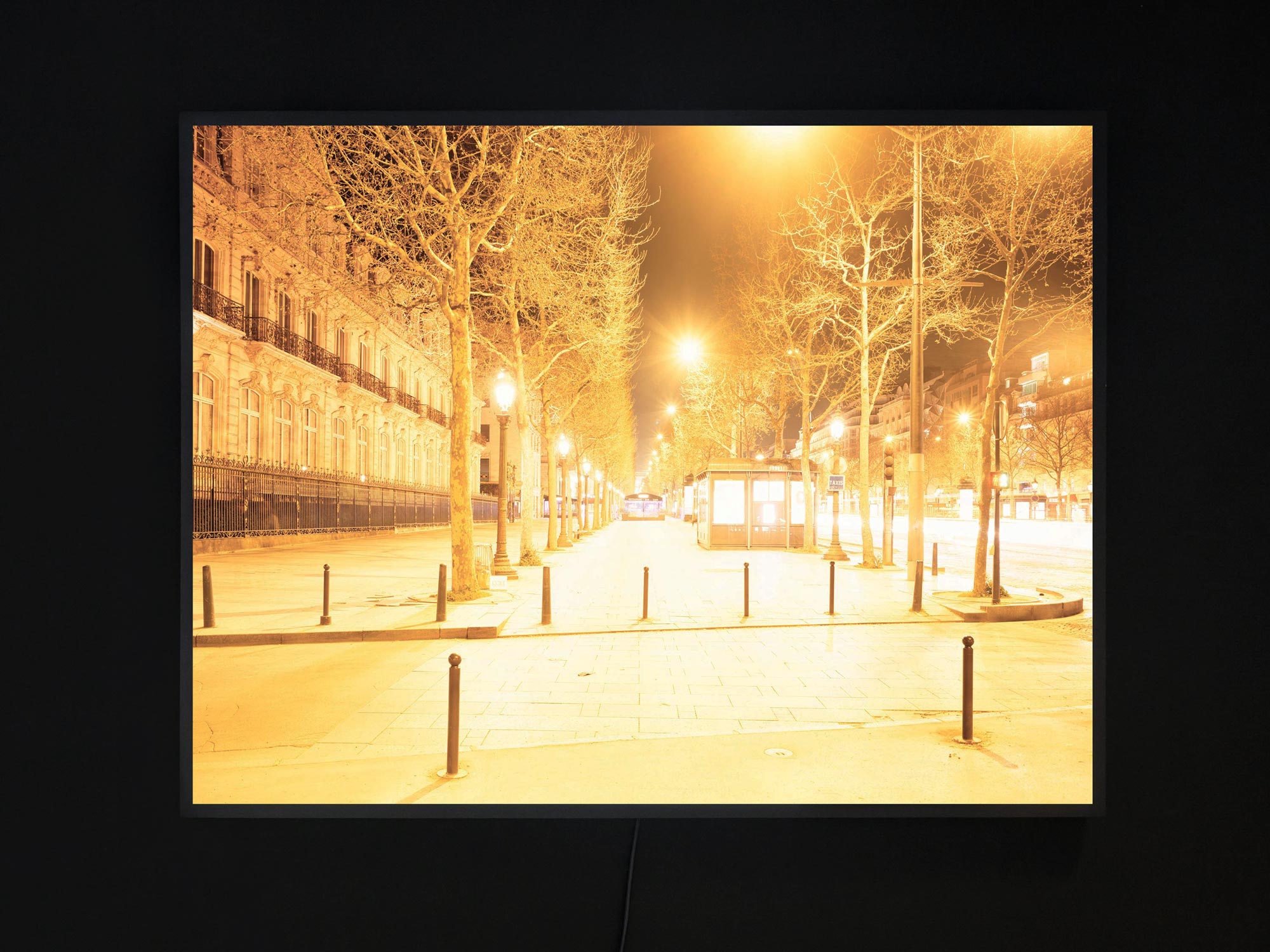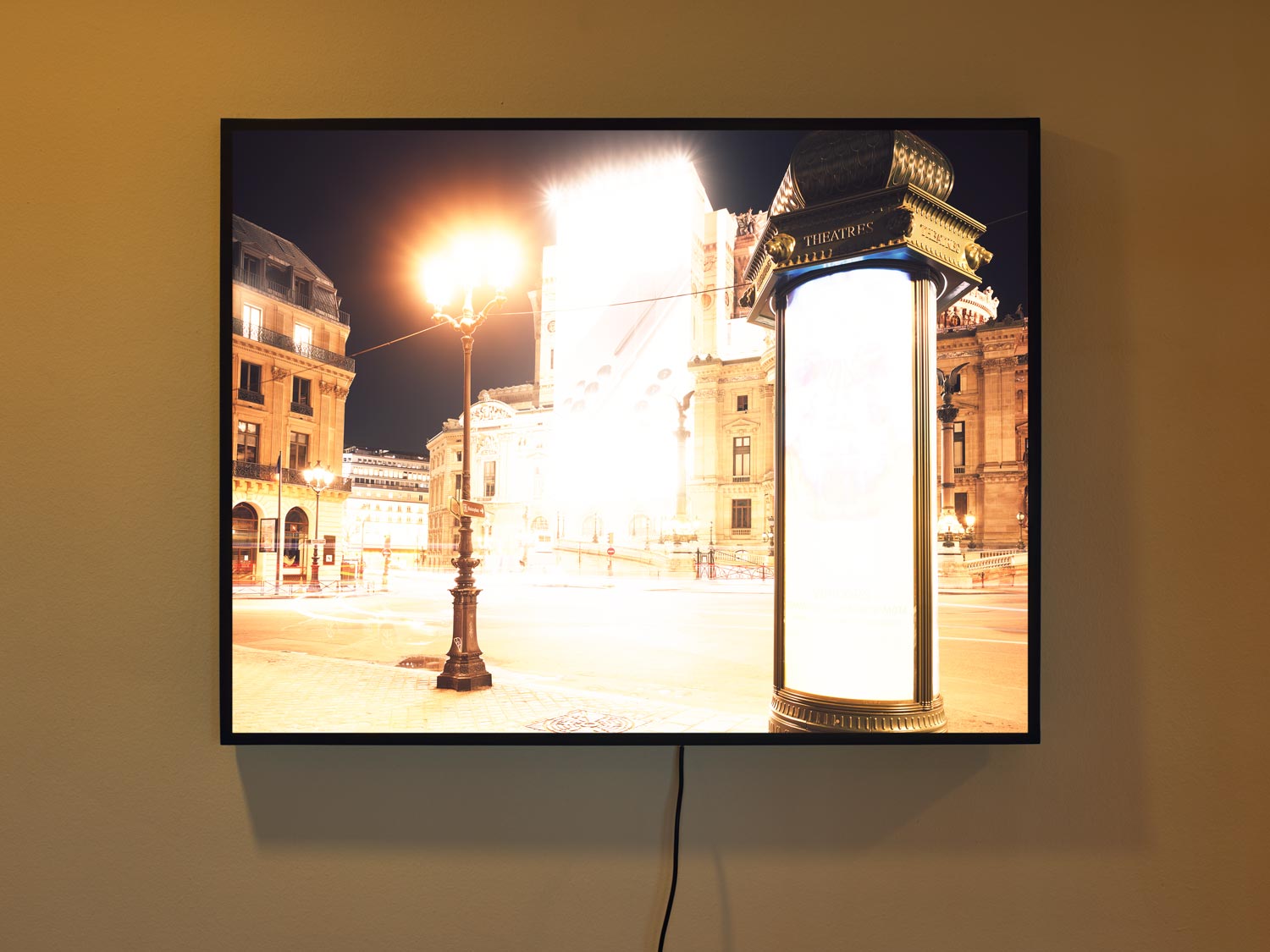

The human eye adapts to changing light levels — a remarkable ability on which our vision depends. Yet this very adaptability makes us ‘blind’ to the true brightness of artificial light sources around us. Exposure Value ZER0̸ is a photographic exploration that maps and questions urban exposure levels: how much light do we really need at night? And when does illumination become excessive or redundant?
To understand the role of night lighting, I turned my camera to Paris and London — two “cities of light” with deep historical ties to illumination. London pioneered large-scale gas lighting in 1807, and less than a century later, electric streetlights first lit up Paris in 1878, transforming the way we experience cities after dark.
Using a 1950s photographic light-measuring technique, I captured urban landscapes with a large-format technical camera, set to exposure value ‘zero’ — a setting that represents an artificially illuminated cityscape. Revisiting this method 70 years later, I kept the images true to the original process, altering only what I consider integral to picture-making: framing, cropping, and selection.
In doing so, the camera records the direct relationship between the photograph, the light present, and the specific place — revealing the past and present in a new light.

